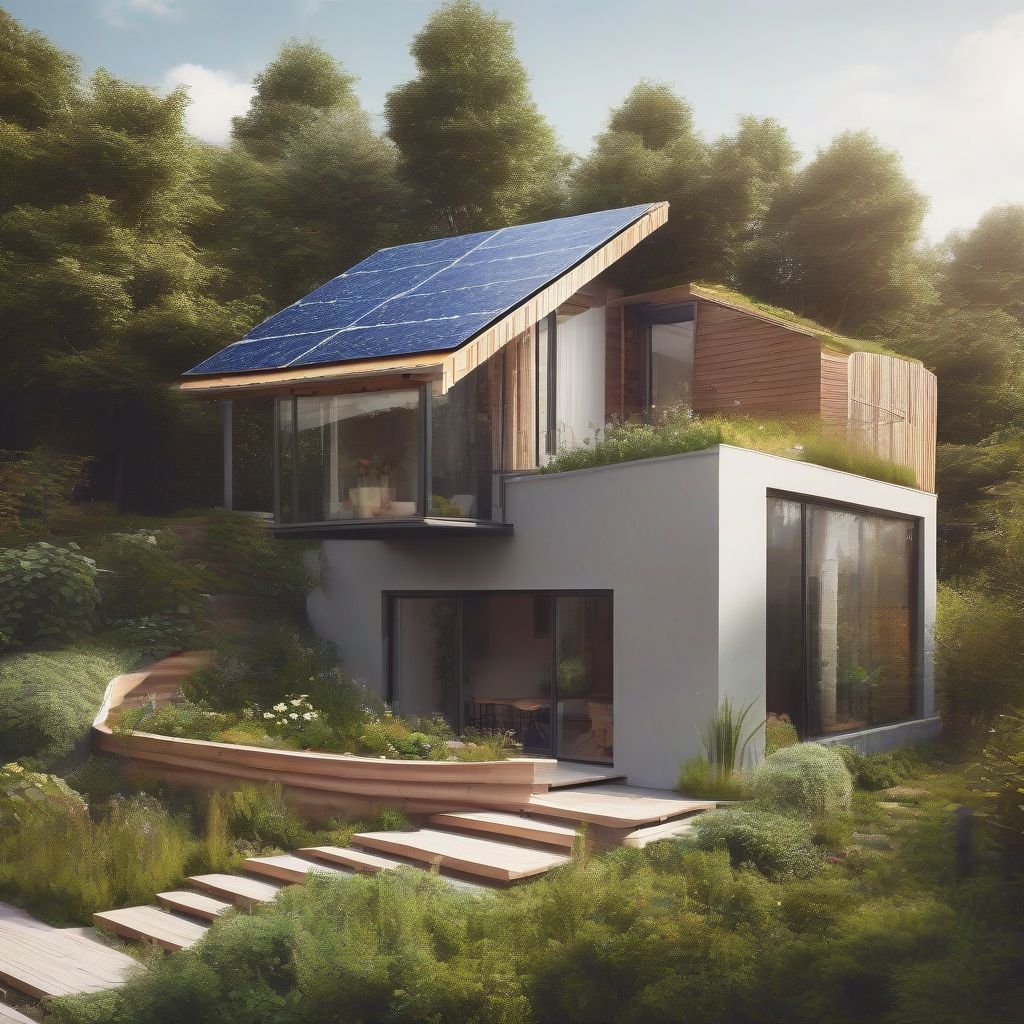Have you ever dreamt of a home that’s not only beautiful but also treads lightly on the Earth? With growing awareness of our environmental footprint, sustainable living is no longer a niche concept but a necessity. And it’s dramatically reshaping how we design and build our homes. The impact of sustainable living on home design is profound, influencing everything from the materials we use to the way we power our spaces. Let’s delve into this exciting evolution and explore how we can create homes that are both stylish and sustainable.
Rethinking Building Materials: From Concrete to Conscious Choices
Traditional building materials like concrete and steel have a significant environmental impact. Sustainable home design prioritizes eco-friendly alternatives like bamboo, reclaimed wood, and recycled materials. These options not only reduce the demand for virgin resources but also often offer superior insulation and durability.
Embracing Natural and Recycled Materials
- Bamboo: This fast-growing grass is incredibly strong and versatile, making it an excellent alternative for flooring, cabinetry, and even structural elements.
- Reclaimed Wood: Giving old wood a new life adds character and reduces deforestation. From rustic beams to unique flooring, reclaimed wood brings history and sustainability to your home.
- Recycled Materials: Incorporating recycled plastic, glass, and metal into building materials minimizes waste and reduces the energy needed to produce new resources. Think countertops made from recycled glass or insulation crafted from recycled denim.
Energy Efficiency: Powering Your Home with the Planet in Mind
Sustainable homes are designed to minimize energy consumption. This involves incorporating passive and active strategies to reduce reliance on fossil fuels.
Passive Design Strategies: Working with Nature
- Natural Light: Maximizing natural light through strategically placed windows reduces the need for artificial lighting, saving energy and enhancing the ambiance of your home.
- Ventilation: Proper ventilation systems can significantly reduce the need for air conditioning, improving indoor air quality and lowering energy bills.
- Insulation: Effective insulation keeps your home comfortable year-round, minimizing the need for heating and cooling.
Active Design Strategies: Harnessing Technology
- Solar Panels: Generating your own electricity with solar panels significantly reduces your carbon footprint and can even lead to energy independence.
- Energy-Efficient Appliances: Choosing appliances with high energy efficiency ratings minimizes energy waste and lowers utility costs.
- Smart Home Technology: Integrating smart thermostats, lighting controls, and other smart home features allows for precise energy management and reduces unnecessary consumption.
Water Conservation: Every Drop Counts
Water scarcity is a growing concern, and sustainable homes are designed to conserve this precious resource.
Water-Saving Fixtures: Low-Flow, High Impact
- Low-Flow Toilets and Showerheads: These fixtures significantly reduce water usage without sacrificing performance.
- Greywater Recycling Systems: These systems collect water from showers and sinks and reuse it for irrigation, reducing the demand for fresh water.
- Rainwater Harvesting: Collecting rainwater for irrigation and other non-potable uses is a simple yet effective way to conserve water.
Creating a Healthy Indoor Environment: Breathing Easy
Sustainable home design prioritizes indoor air quality and creates a healthy living environment.
Natural and Non-Toxic Materials: Choosing Healthier Options
- Low-VOC Paints: Volatile organic compounds (VOCs) in traditional paints can release harmful fumes. Low-VOC or VOC-free paints are a healthier alternative.
- Natural Flooring: Materials like bamboo, cork, and linoleum are naturally hypoallergenic and don’t release harmful chemicals.
- Proper Ventilation: Ensuring adequate ventilation helps remove pollutants and maintain healthy indoor air quality.
The Long-Term Benefits: Investing in a Sustainable Future
Building or renovating a sustainable home is an investment in the future.
Increased Home Value: Appealing to Eco-Conscious Buyers
Sustainable features are becoming increasingly desirable to homebuyers, boosting the value of your property.
Lower Operating Costs: Saving Money While Saving the Planet
Reduced energy and water consumption translates to lower utility bills, saving you money in the long run.
Enhanced Comfort and Well-being: Living in Harmony with Nature
Sustainable homes are designed to be comfortable, healthy, and in harmony with the environment, promoting a sense of well-being.
 Sustainable Home Design
Sustainable Home Design
Conclusion: Building a Better Future, One Home at a Time
The impact of sustainable living on home design is transformative, offering a path towards creating homes that are both beautiful and environmentally responsible. By embracing eco-friendly materials, energy-efficient technologies, and water conservation strategies, we can build homes that benefit both ourselves and the planet. Start small, make conscious choices, and join the movement towards a more sustainable future. What steps will you take to make your home more eco-friendly? Share your thoughts and ideas in the comments below! For more tips on organizing your sustainable home efficiently, check out this helpful resource: How to Organize Your Home Efficiently with Storage Solutions.



